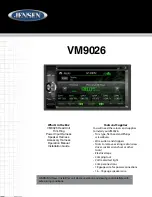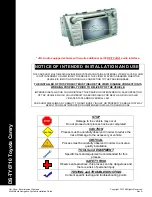
Spatial Reference Manual
Page 21 of 158
Version 4.4
04/06/2019
5.5
The Sensor Co-ordinate Frame
Inertial sensors have 3 different axes: X, Y and Z and these determine the directions
around which angles and accelerations are measured. It is very important to align the
axes correctly in installation otherwise the system won't work correctly. These axes are
marked on the top of the device as shown in Illustration 1 below with the X axis
pointing in the direction of the connectors, the Z axis pointing down through the base
of the unit and the Y axis pointing off to the right.
When installed in an application the X axis should be aligned such that it points
forwards and the Z axis aligned so that it points down when level. A good way to
remember the sensor axes is the right hand rule, which is visualised in Illustration 2.
You take your right hand and extend your thumb, index and middle. Your thumb then
denotes the X axis, your index denotes the Y axis and your middle denotes the Z axis.
5.6
Roll, Pitch and Heading
Orientation can be described by the three angles roll, pitch and heading, these are
known as the Euler angles. The rotation axes of roll, pitch and heading are shown
visually in Illustration 1. The arrow indicates the positive rotation direction.
Roll is the angle around the X axis and is zero when the unit is level. Pitch is the angle
around the Y axis and is zero when the unit is level. Heading is the angle around the Z
axis and is zero when the positive X axis is pointing to true north.
5.6.1
Second Right Hand Rule
The two right hand rules are often the best way to memorise the sensor axes and
directions of positive rotation. The first right hand rule gives the positive axis
directions and is described in section 5.5. The second right hand rule shown in
Illustration 3 provides the direction of positive rotation. To use it, point your thumb in
the positive direction of that axis, then the direction that your fingers curl over is the
Illustration 1: Spatial axes
Illustration 2: First right hand rule
















































